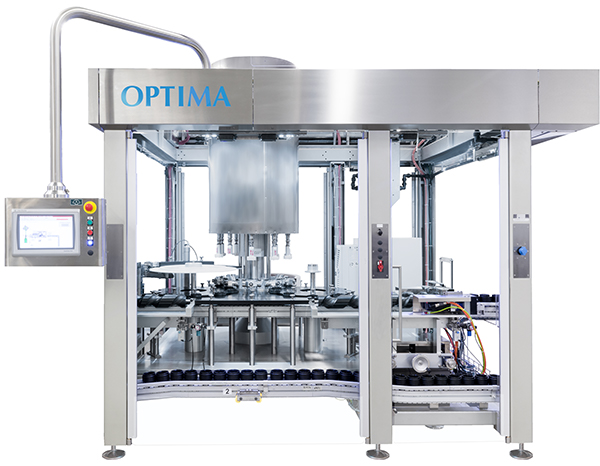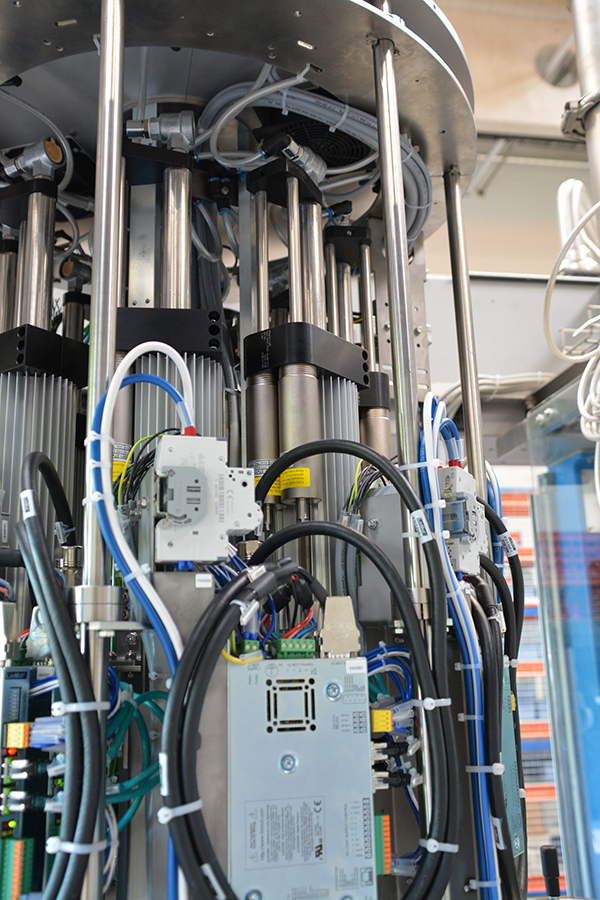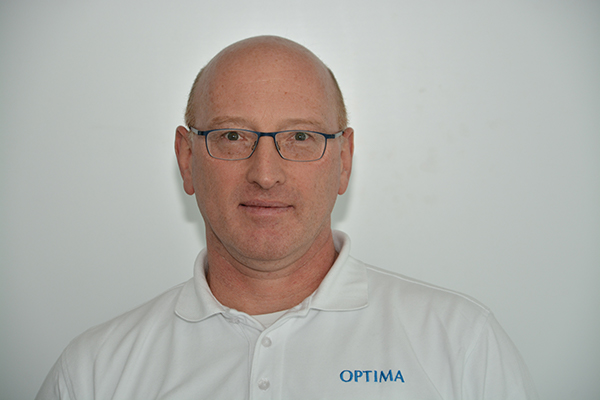Filling and closure processes can be implemented dynamically and flexibly with linear rotary direct motors. That›s why noted packaging machine manufacturer OPTIMA uses them in the closure units for its monoblock and free-standing machines. Another important reason is that the motors directly provide data on the actual stroke and torque values generated for ongoing quality assurance or subsequent process analysis. This type of drive supports modern Industry 4.0 concepts right down the line.

Our customers in the food products, cosmetics, and chemical industries have to deal with smaller lot sizes and therefore more frequent product changeovers. We are currently working on a project, for example, where a filling and packaging line needs to be changed over to a new product every 30 minutes,» says Andreas Seitz, Project Engineering Director for Food and Chemical Solutions at OPTIMA consumer GmbH. «It wasn›t that long ago that one lot would run for one or two weeks. Now a half an hour is not uncommon.» Medium-sized companies in particular are driving this trend in the industries mentioned above. They include a German manufacturer that produces an extensive portfolio for discounters and drugstores, ranging from spot removers to wood and leather polishes to car care products for automotive interiors.
Medium-sized companies from the above-mentioned sectors in particular are driving this development. Among them is a German manufacturer that produces an extensive portfolio for discounters and drugstores, ranging from stain remover to wood care and leather polishes to care products for car interiors.
OPTIMA relies on direct linear rotary drives in the closure units of its modern, rotary indexing closure machines, achieving output of up to 600 containers per minute. (Photo: Optima)
Frequent product changeovers—short setup times
These are not batches of a million units, like we typically see for laundry detergents,» explains Andreas Seitz. «On the contrary. Lots consist of a few thousand units, and the product range is enormous, with a nearly incomprehensible variety of package styles, shapes, and sizes. Order-based production is actually indispensable here for logistical reasons.»
The affected companies have correspondingly high demands for flexibility, setup times, and process reliability of the filling and packaging lines. OPTIMA started addressing this trend early and has adapted its packaging systems to the changing market conditions. Comprehensive modularization and the intensive use of servo technology form the foundation.
In 2016, the company converted the closure units in its packaging systems to direct-drive technology for medium and high-performance applications. Up to 16 closure spindles mounted vertically on a rotating table are driven by a linear rotary motor from LinMot’s PR01 product family.
LinMot’s PR01 linear rotary motors are deliberately compact and combine a rotary and a linear direct motor in one housing, which can be controlled independently of each other.
Linear rotary motors provide flexibility in the manufacturing process
The highly dynamic electric motors, specially designed for closure and screwdriving processes, combine a linear and a rotary direct drive in a compact housing with IP 64 protection, each of which is actuated separately. «This solution guarantees not only highly dynamic screwdriving processes and currently up to 600 closure operations a minute for our users, but also allows them to adjust critical parameters, such as stroke length, impact force, angle of rotation, and torque from the user interface on the packa ging machine,» says Andreas Seitz of the significant advantages of this new closure technology. Time-consuming changeover of cam discs or manual setup of slip clutches are eliminated, so setup times are much shorter than for conventional systems.»
Efficient and sustainable direct drives
Maintenance is also easier, as the linear rotary motion is implemented with direct linear and rotary drives, which do not produce dirt or dust and are not sensitive to them. If a defect occurs, the affected spindle can also be shut down until the repair can be made, so production can continue at a reduced pace. For a planned machine stop, it is also possible to finish production of the containers located in the closure system. These features, along with the fact that the selected parameters can be achieved from a standing start when production resumes, even after a long period of downtime, contribute to the high efficiency of this solution.
Magnetic springs (to the right of the black heat sink in the image) compensate for the weight of the closure spindle and maintain a safe position even when power has been disconnected.
Dipl.-Ing. (BA) Markus Dierolf, designer at OPTIMA consumer GmbH.
Linear rotary motors as a data source
Another point in favor of direct linear rotary motors, which optimally supports digital transformation and traceability along with quality assurance measures, is that the motors ‹automatically› supply the parameters and the torque applied and distance traveled for every threading operation. «Our machines have been capturing and utilizing this data for a while, but now we can entirely eliminate the external sensors such as torque transducers and camera systems for height control,» explains Markus Dierolf. This reduces cabling and material costs and simplifies the transfer of data to upper-level systems.
The new OPTIMA closure units are very well received by their customers. «The customer who received the first packaging line equipped with LinMot technology has already ordered a second one to replace existing systems. I think that speaks for itself.»
Andreas Seitz, Project Engineering Director for Food and Chemical Solutions at OPTIMA consumer GmbH. (Photo: Rossmann)
In the pipeline: linear rotary motors in filling stations
But OPTIMA is not yet satisfied. For the next step, the company plans to equip filling stations with linear rotary motors as well, as Andreas Seitz reports: «These concepts already exist. The arguments are the same as for the closure units—but here we are dealing with individual, parameter-based control of the filling needle motion at each filling point. This means optimal filling, even for extremely sensitive products that can easily decompose or that tend to foam easily.»The company has already demonstrated this with extensive filling tests using the new technology.
Over the longer term, the packaging machine specialist wants to expand the new filling and closure technology to other industries and applications. LinMot still has some homework to do for this, which Seitz has sent back with the responsible parties: «Along with the existing ATEX linear motors from LinMot, we want solutions that allow linear rotary motors and servo drives to be used in an ATEX environment as well. It would also be very helpful if the motors and control electronics were located in a single housing.»LinMot has followed this wish and already presented the first solutions at the SPS/ IPC/DRIVES 2017 show.















